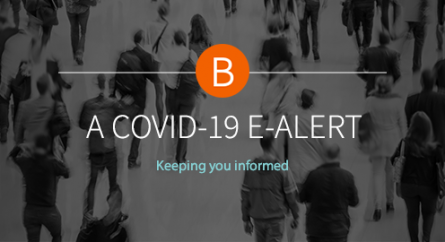Client Alert: First Look at the Paycheck Protection Program Loan Forgiveness Application
It has been approximately one month since banks began funding Paycheck Protection Program (“PPP”) loans to small businesses under the CARES Act. A “forgivable” loan covering up to 2 ½ months of operating costs including payroll expenses, the first payment is not due for six months following disbursement. In the meantime, the business-borrower can ask its lender to forgive up to 100% of the principal amount borrowed provided it was used to (1) retain employees, (2) make mortgage interest payments, (3) pay rent, and/or (4) pay utilities.
On Friday, May 15, the Small Business Administration released the first iteration of the Loan Forgiveness Application available here. The document runs 11 pages and consists of five sections: (1) definitions and instructions; (2) the PPP loan forgiveness calculation form; (3) the borrower’s certification; (4) the calculation worksheet; and (5) an optional borrower demographic information form. The Forgiveness Amount Calculation is derived from the worksheet, which requires the borrower to adjust its payroll costs as necessary to meet the PPP loan thresholds for full-time equivalent employees and salary/hour wages reductions that the borrower imposed during the loan period.
The application allows the borrower to use the “Covered Period” measured as the eight-weeks from the date of loan disbursement or the “Alternative Payroll Covered Period” measured from the day of the first pay period following the loan disbursement date. This is important because only costs paid or incurred within the chosen 8-week period are eligible for forgiveness. Payroll costs that are incurred but not paid during the last pay period of the 8-week period are eligible for forgiveness if paid on or before the next regular payroll date. By contrast, an eligible nonpayroll cost (i.e., mortgage interest, rent, or utilities) must be paid during the 8-week period or incurred during that time and paid on or before the next regular billing date.
Borrowers must submit documentation to substantiate the loan forgiveness calculation, including bank account statements, tax forms, and receipts documenting their payroll and benefits disbursements. In addition, borrowers are required to retain (but not submit) other documentation substantiating the number of individuals claimed in connection with payroll costs and the borrower’s efforts to re-hire any departed employees during the covered period. As an indication that both loan forgiveness and borrower eligibility may be subject to later review by SBA, the application includes an acknowledgment that a borrower’s loan forgiveness application may be disapproved if SBA determines that the borrower was ineligible for the PPP loan.
An authorized representative of the borrower must sign the application under penalty of fine and imprisonment for knowingly making any false statements to obtain forgiveness.
Lenders have 60 days from receipt of a forgiveness application to issue a decision. Under the CARES Act, the borrower “shall” be eligible for forgiveness in an amount equal to the costs incurred and payments made during the “covered period.” In other words, forgiveness is not discretionary: unless the lender disagrees with the borrower’s calculation, it must forgive the loan.
Should you have any questions about the forgiveness application or need assistance completing the form, please contact a member of the COVID-19 Response Team or your lawyer at Bowditch.
Categorized: Publications
Tagged In: CARES Act, COVID-19, Payroll Protection Program, PPP loans, SBA






